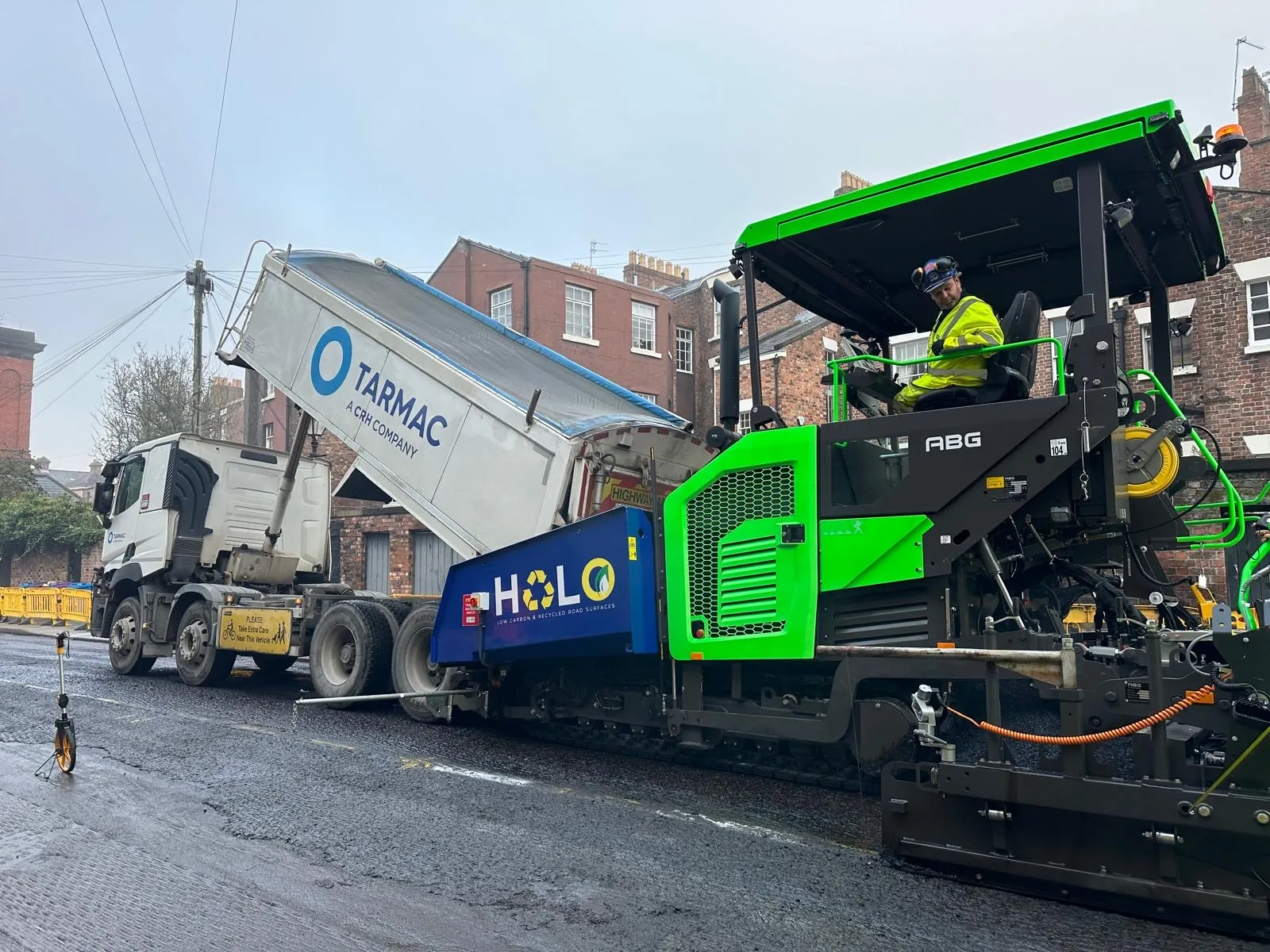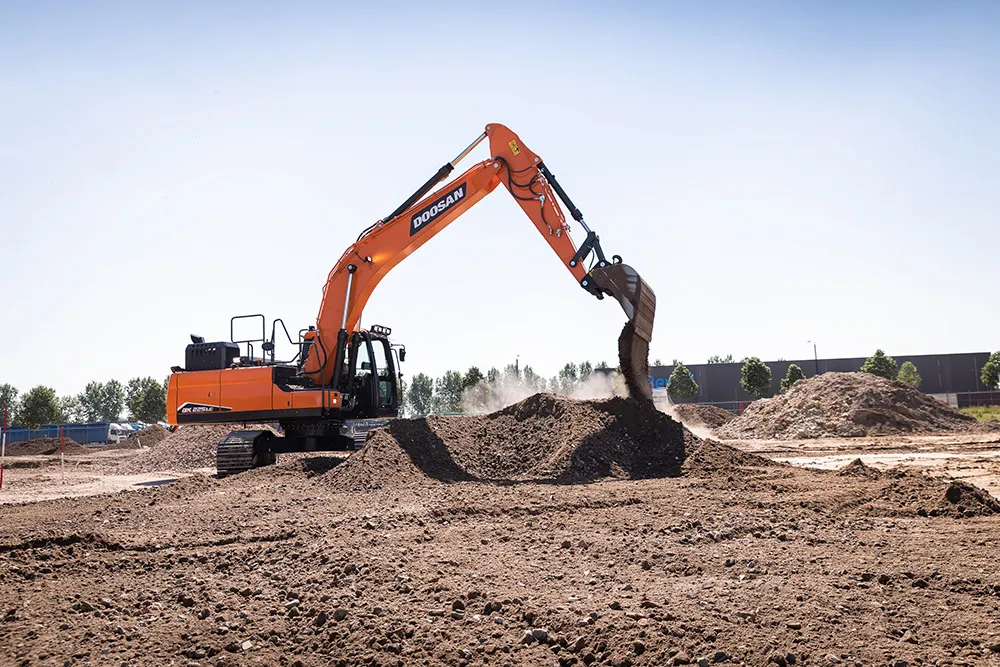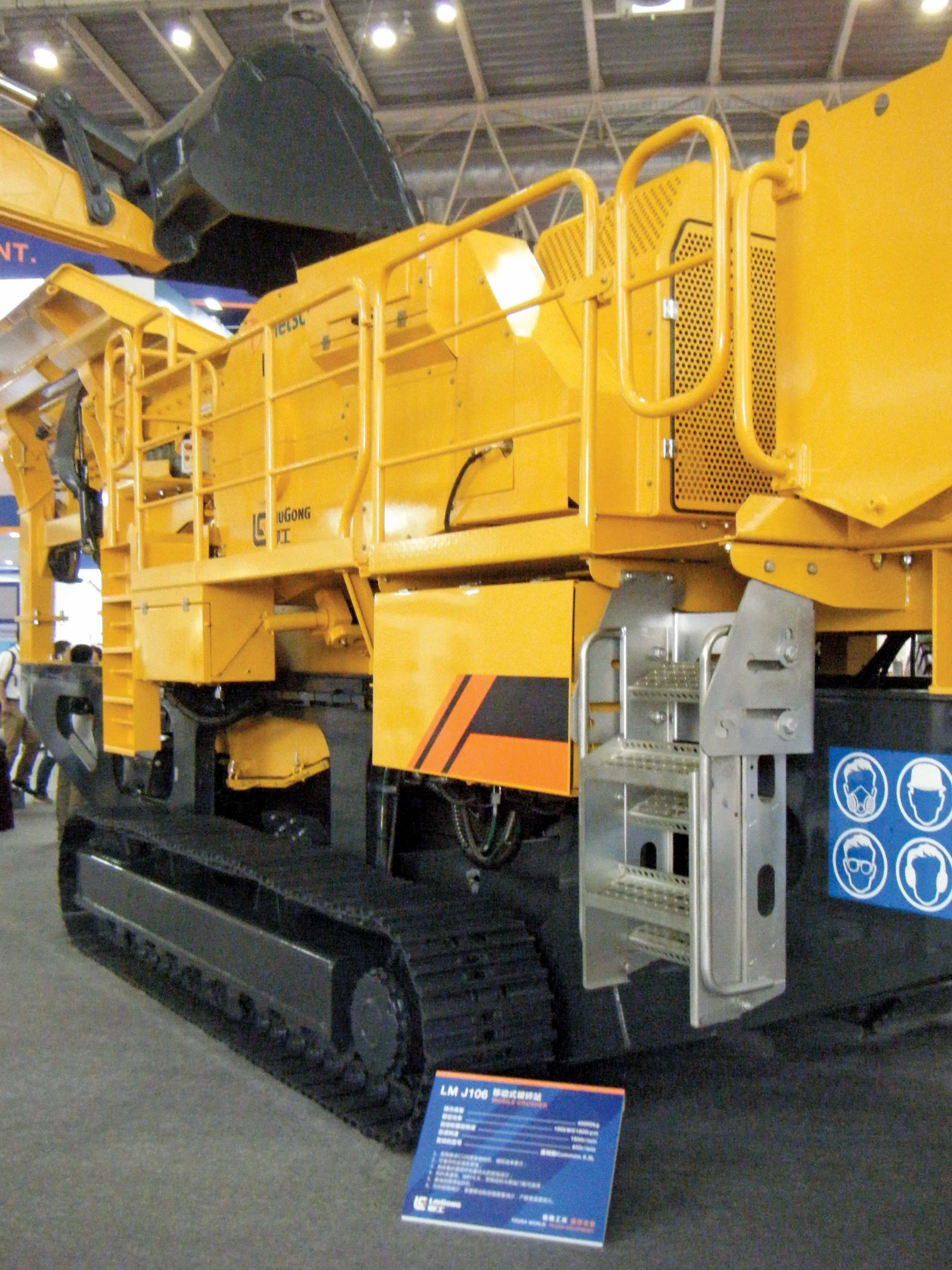
A new line of
“Really it’s all about the cost of ownership, and keeping that as low as we possibly can,” said Mick Sanders, product manager with JCB.
The new mini excavators are the 48Z-I, 51R-I, 55Z-I and 57C-I. Weights range from 4792 kg to 5483 kg. In addition to low cost, the machines are designed to provide greater height and lift. Bucket and dipper tear-out have been improved as well.
Many new features have a direct impact on costs. For example, greasing that previously occurred daily now only has to be completed every 500 hours. Also, removing debris from the undercarriage is required much less frequently because of a redesigned system, while tracks have been adjusted to prevent aggregate from sticking to the treads. “The spoil falls away,” Sanders said.
The cab has been upgraded as well. A new instrument panel is intuitive and easy for operators to use – particularly important for those who rent the machines.
The excavator line now includes flat glass on cabs, a considerable cost-savings when replacement is required.
Safety has been improved too. Each control is isolated, and none are engaged when the operator fires up the excavator. “Nothing is active when the engine starts,” Sanders explained.
A fuel-efficient idling system adds more cost savings. Automatic idle improves efficiency, as does a new one-touch idle system. With that process, the operator makes a quick touch and the machine idles, which makes it perfect for short interruptions.
The excavators also have seen boom and tilt adjustments that enable them to dump loads precisely without having to reposition the machine, Sanders said. Finally, a body that is 100% steel reduces costs through its durability.









